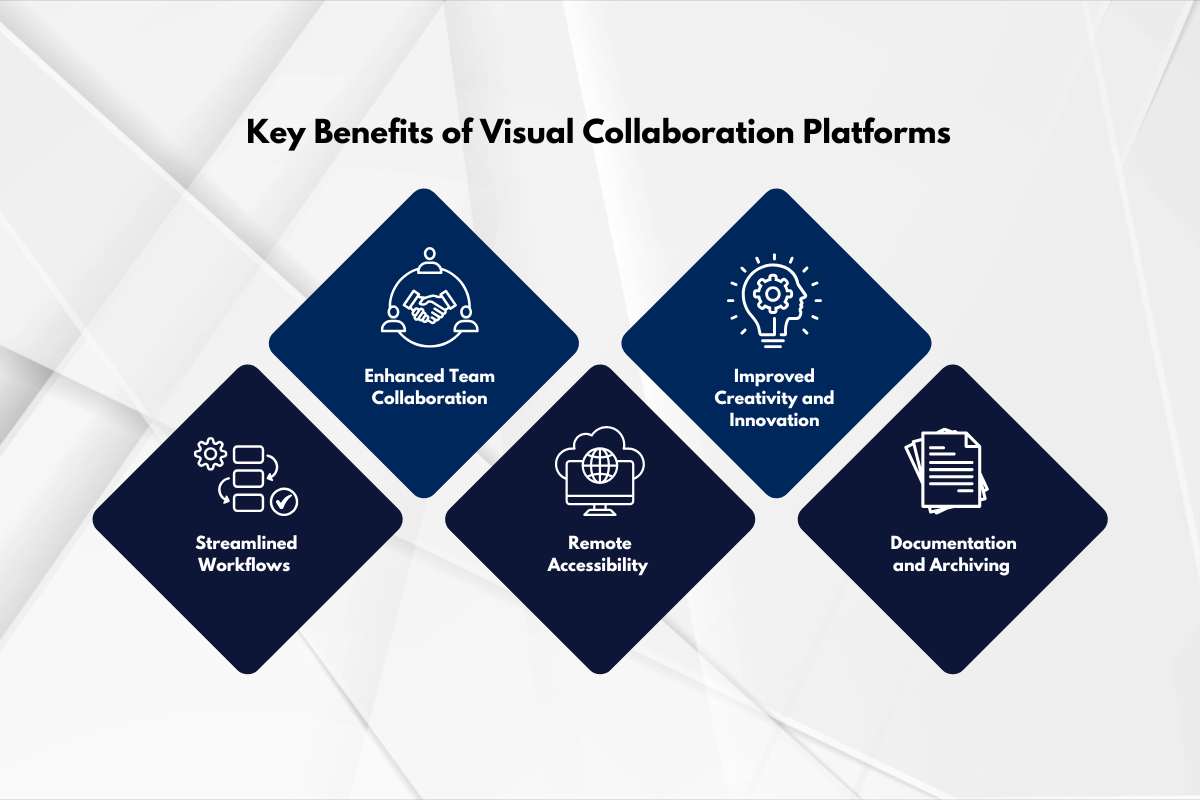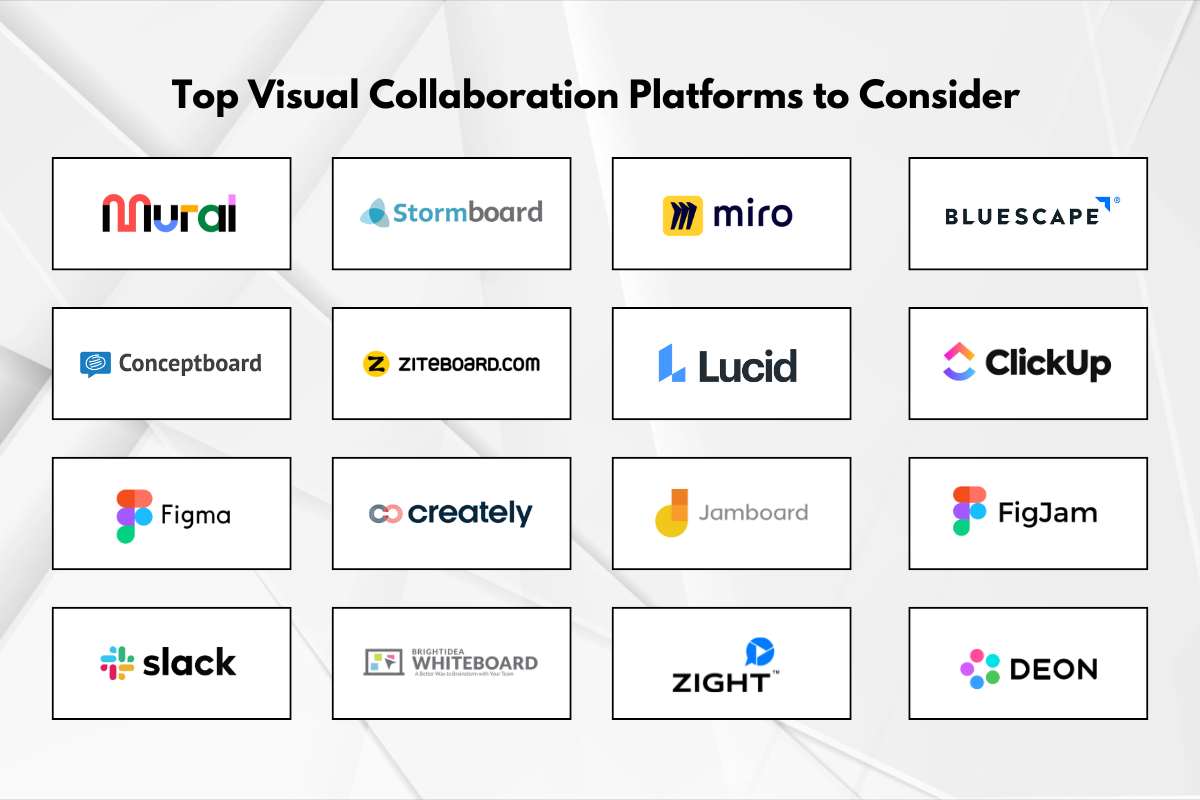The Power of Visual Collaboration Platforms in Modern Workspaces
The Power of Visual Collaboration Platforms in Modern Workspaces
Blog Article
The Power of Visual Collaboration Platforms in Modern Workspaces
Share Now:
LinkedIn
Twitter
Facebook
Reddit
Pinterest

- Source: meetmeinthecloud.com
Table of Contents
Digitalization is expanding fast, and teams need collaboration tools to keep connected, boost productivity, and innovate. As remote and hybrid work becomes more commonplace, visual collaboration platforms have become a must-have for brainstorming, planning, and delivering projects quickly. These platforms provide interactive collaborative workspaces that allow teams to visualize their ideas, engage, and organize workflows.
What are Visual Collaboration Platforms?
Visual collaboration platforms are digital collaboration tools that help teams to visually collaborate using a virtual whiteboard, diagrams, sticky notes and interactive features. These platforms streamline communication, align teams on objectives, and aid complex problem-solving. Whether you are working hybrid or in-office, businesses harness these tools to increase creativity and efficiency.
Key Benefits of Visual Collaboration Platforms

- Enhanced Team Collaboration – These platforms bridge communication gaps by offering an interactive space where teams can collaborate in real time, regardless of location.
- Improved Creativity and Innovation – The ability to use mind maps, diagrams, and virtual sticky notes helps teams brainstorm more effectively.
- Streamlined Workflows – Many platforms integrate with project management and communication tools, reducing the need for multiple applications.
- Remote Accessibility – Teams across different time zones can work together seamlessly, making global collaboration effortless.
- Documentation and Archiving – Unlike traditional whiteboards, digital boards save all input, ensuring that no ideas are lost and allowing teams to revisit discussions anytime.
Top Visual Collaboration Platforms to Consider
A variety of platforms cater to different collaboration needs. Here are some of the best options available:

1. Mural
Mural is a popular visual collaboration tool that comes with a large library of templates, sticky notes, and frameworks to assist teams in brainstorming and planning projects. Mural’s easy-to-use interface and ability to collaborate in real-time make it a great choice for various scenarios such as remote teams and design thinking workshops.
2. Stormboard
Stormboard is more focused on structured brainstorming, which assists teams in organizing their ideas. Communication is seamless with integrations to Microsoft Teams and Slack, and projects are easy to keep track of with in-depth reporting tools.
3. Miro
Miro is a widely adopted tool with a well-known template library, infinite canvas, and powerful integrations with Asana, Jira, and Google Workspace. Miro can be a great choice for agile teams with its ease-of-use and real-time collaboration features in real-time.
4. Bluescape
Bluescape is an advanced digital workspace designed specifically with enterprises in mind. Bluescape offers secure cloud-based storage, video conferencing integrations, and a powerful whiteboarding capability that works well for large-scale business operations.
5. Conceptboard
Conceptboard is designed to be easy to use and offers tools for brainstorming and project modelling in real time. Its good security features and ability to work with productivity apps make it especially beneficial to businesses looking to have a secure, meaningful collaborative space.
6. Zitaboard
Zitaboard is a good whiteboarding utility for both small and large groups. The interactivity of the boards, real-time co-browsing experience, and ability to customize templates make it ideal for brainstorming creative ideas and for planning large and strategic goals.
7. Lucid Visual Collaboration Suite
Lucid’s collection of products includes Lucidchart and Lucidspark create diagrams and brainstorm ideas especially useful for treating complex processes, outlining workflows and processes in the corporate environment.
8. ClickUp
ClickUp is more than just a whiteboard vendor, it is a full suite that covers all a project manager might need. It is designed with productivity in mind and includes task tracking, collaboration, project mgmt tools and visualizations.
9. Figma
Figma is an excellent UI/UX application nd a popular amongst designers for real-time collaboration on designs. It includes strong prototyping features as well as version controls that are essential for teams of designers working on digital products.
10. Creately
Creately is an easy-to-use software that is primarily a visualization tool that combines diagramming and mind-mapping in a very visual way. It also allows teams to co-browse and has integrations with popular software and other productivity tools. This a great product for a range of users, including businesses and educators.
11. Google Jamboard
Google Jamboard is a virtual whiteboard that works great in the Google workspace. For teams who already use Google Docs, Sheets, and Meet, collaborating with Jamboard feels familiar and natural.
12. FigJam
FigJam, from Figma, is designed for a more informal and interactive collaboration space for brainstorming. The sticky notes, drawing tools, and Figma design integrations make it an ideal tool for creative teams for brainstorming and ideation.
13. Slack
Slack is primarily a communication platform for teams, but they have been integrating visual collaboration tools, such as whiteboarding apps and workflow automation, as a benefit to teams collaborating.
14. BrightIdea Whiteboard
BrightIdea Whiteboard focuses on innovation management, which allows teams to gather ideas and productively refine them. Because of its structured approach, this whiteboarding tool works very well for organizations that regularly operate within the innovation mindset.
15. Zight
Zight (formerly CloudApp) improves communication with screen recording, annotations, and file-sharing. This is very beneficial for teams who rely on visual feedback and asynchronous communication.
16. DEON
DEON is a highly visual workspace that is designed for creatives and enterprise teams. Whether your medium is photography, video, or illustration, DEON combines real-time collaboration and rich media support as a powerful way to manage a difficult project and practice visual storytelling.
Choosing the Right Visual Collaboration Platform
When selecting a visual collaboration platform, consider the following factors:
- Ease of Use – Ensure the platform has an intuitive interface that suits your team’s workflow.
- Integration Capabilities – Look for tools that integrate with your existing software stack, such as Slack, Google Workspace, or Jira.
- Scalability – Choose a platform that can grow with your business, offering features for both small teams and large enterprises.
- Security and Compliance – If handling sensitive data, prioritize platforms with strong encryption and compliance with industry standards.

- Pricing and Accessibility – Compare pricing plans to find a solution that aligns with your budget and collaboration needs.
The Future of Visual Collaboration Platforms
The rising interest in visual collaboration platforms is due to the growing acceptance of hybrid and remote work environments. Emerging technologies such as artificial intelligence (AI), augmented reality (AR), and automation will likely continue to enhance visual collaboration tools and make collaboration more immersive and productive. With the appropriate platform, collaboration can overcome distance, drive innovation, and optimize the coordination of our work. A strong investment in a visual collaboration tool can maximize work productivity for teams of all arrangements, including startups, enterprises, and educators.
Conclusion
Visual collaboration platforms are integral to any business or team looking to enhance communication with the necessary visual tools, reduce workloads through collaboration, and drive innovation. These platforms are changing how teams and people can work together in a collaborative space with visual collaboration tools incorporated. As the technologies continue to improve, organizations that leverage these resources and technologies will remain at the forefront of the digital age.